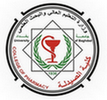The Faculty of Pharmacy discussed the Master’s thesis, tagged” The prevalence of metabolic syndrome among university students in Wasit, Iraq” by Alaa Hasoon Zamil and the supervisor, Lec. Dr. Seenaa Sadiq Amin, in the Clinical Laboratory Sciences Department. The thesis aimed to assess the prevalence of metabolic syndrome and its associated risk factors in a group of apparently healthy university students.The study aimed to estimate the prevalence of insulin resistance in subjects with MetS, and the association between these two conditions, and the potential risk factors for their development in university students.The study included cross-sectional analytic investigation used a sample of 300 apparently healthy students aged between 18 and 25 years, from Wasit Iraq, from October 2021 to February 2022. The data was collected using a structured direct interview with a self-administered questionnaire. Anthropometric measurements (waist circumference, height, weight, body mass index, and systolic and diastolic blood pressure), total cholesterol, triglyceride level, high-density lipoprotein, and fasting blood glucose were measured in fasting serum specimens using enzyme-linked immunosorbent assay (ELISA) specific kits. Specific IDF/AHA/NHLBI criteria were used to diagnose MetS, and the Homeostatic Model Assessment of Insulin Resistance (HOMA-IR) was used to determine insulin resistance. This study, which is one of the few studies on MetS in university students in the Middle East and the first in Iraq, shows:
.A significantly high prevalence of MetS and insulin resistance among Iraqi university students in Wasit.
.The most common components of MetS were fasting blood glucose and increased waist circumference.
.The significant risk factors for MetS were older age, females, high body mass index (≥ 25), low physical-activity, and wrong dietary choices.
.The more closely associated MetS components with insulin resistance were increased waist circumference and high blood pressure; moreover, overweight, smoking, and the tendency for high consumption of fast food are the major risk factors for insulin resistance in those individuals.



